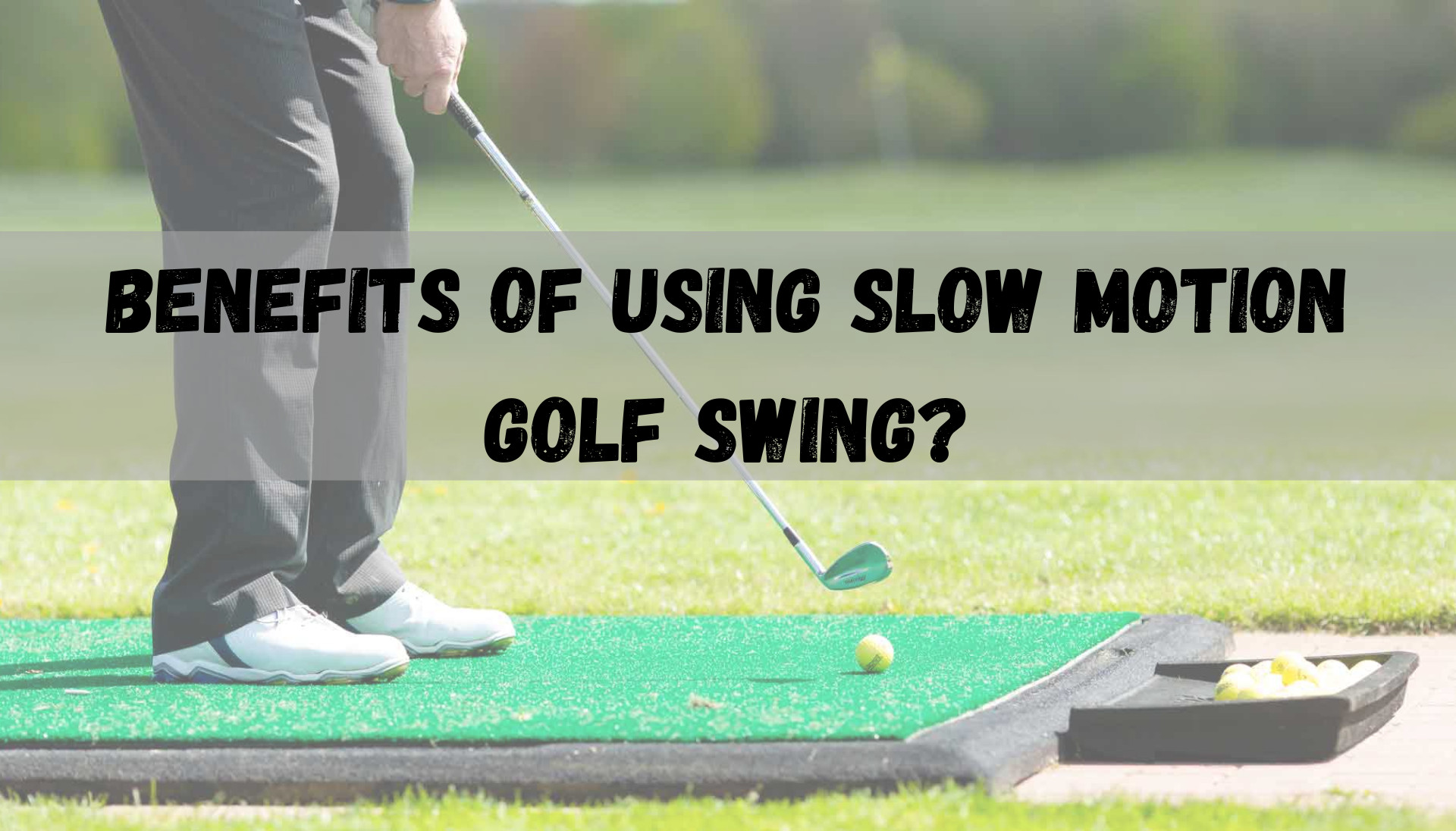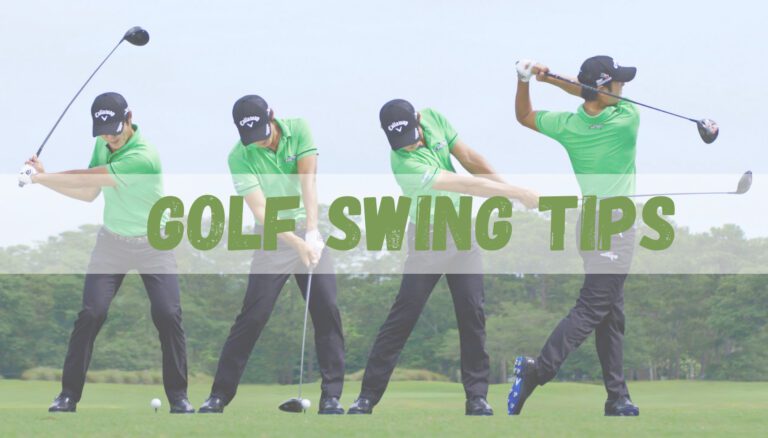Benefits of Using Slow Motion Golf Swing?
Have you ever felt frustrated trying to achieve the perfect golf swing? You’re not alone. Many golfers, from beginners to seasoned players, struggle with consistency, precision, and swing speed. But what if the secret to improvement lies not in swinging faster or harder, but slower? Enter the world of slow-motion golf swing—a transformative practice that can help you master your technique, boost your confidence, and elevate your game.
In this article, we’ll explore the benefits of slow-motion golf swing, provide a step-by-step guide for practicing them, and offer practical tips to help you incorporate this method into your training routine. Let’s dive in and unlock your full potential on the golf course.
Benefits of Slow-Motion Golf Swings
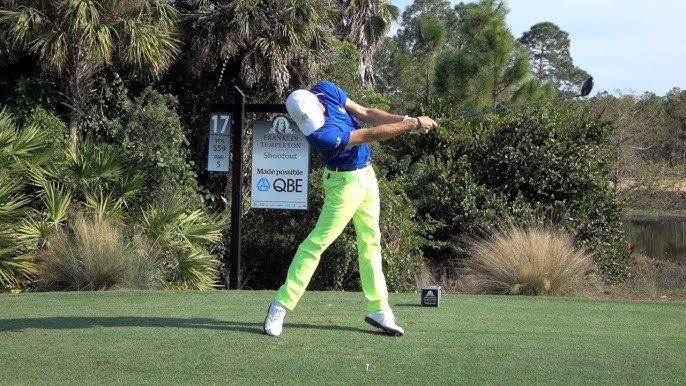
1. Master the Fundamentals
Slow-motion swings allow you to focus on every aspect of your form. By reducing the speed, you can carefully observe your grip, stance, posture, and swing path. This deliberate practice helps you identify and correct flaws, creating a solid foundation for consistent performance.
2. Develop Muscle Memory
Repetition is key to developing muscle memory, and slow-motion practice is one of the most effective ways to engrain proper mechanics into your game. Each controlled movement reinforces the correct positions and sequences, making them second nature over time.
3. Improve Swing Accuracy
A slower pace enables you to control your club’s trajectory and ensure that your swing stays on plane. This precision translates to better ball contact and improved accuracy when you return to full-speed swings.
4. Boost Swing Speed
It may seem counterintuitive, but practicing slow-motion swings can lead to increased swing speed. By perfecting your technique and maximizing efficiency, you’ll generate more power effortlessly when executing a full-speed swing. The biomechanical refinement achieved during slow practice ensures that your energy is directed efficiently.
5. Reduce Injury Risk
Practicing slowly minimizes strain on your body, allowing you to focus on proper alignment and reducing the risk of injury. This is especially beneficial for beginners and older golfers who may be prone to overuse injuries.
Step-by-Step Guide to Mastering Slow-Motion Swings
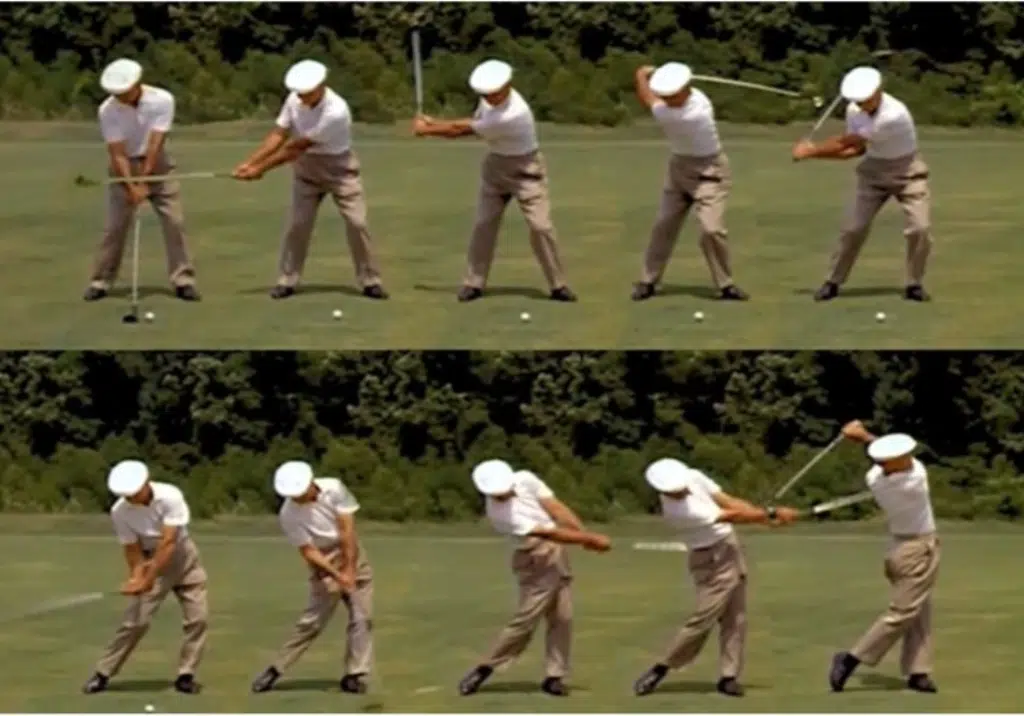
Step 1: Warm Up Properly
Before starting any golf practice, it’s essential to warm up. Spend 5-10 minutes doing light stretches and dynamic exercises to prepare your muscles and joints for movement.
Step 2: Set Up Your Stance
- Grip: Hold the club with a relaxed grip, ensuring your hands are positioned correctly. The “V” formed by your thumb and index finger should point toward your trail shoulder.
- Posture: Stand with your feet shoulder-width apart, knees slightly flexed, and spine tilted forward from the hips.
- Alignment: Aim your clubface at your target and align your body parallel to the target line.
Step 3: Perform the Takeaway
- Slow Start: Begin your backswing by moving the clubhead back slowly and smoothly.
- Arm Position: Keep your lead arm straight and your trail arm relaxed.
- Weight Shift: Gradually shift your weight to your trail foot as you rotate your shoulders.
- Focus: Maintain a steady head position and keep your eyes on the ball.
Step 4: Transition to the Downswing
- Controlled Movement: Transition from the backswing to the downswing in a fluid motion.
- Weight Transfer: Shift your weight from your trail foot to your lead foot.
- Hip Rotation: Begin rotating your hips toward the target while maintaining your upper body’s posture.
- Club Path: Ensure the club follows the correct path, staying inside the target line.
Step 5: Execute the Follow-Through
- Finish Strong: Allow your arms to fully extend and the clubhead to release naturally.
- Balanced Finish: End your swing in a balanced position, with your weight on your lead foot and your chest facing the target.
Tips for Practicing Slow-Motion Swings
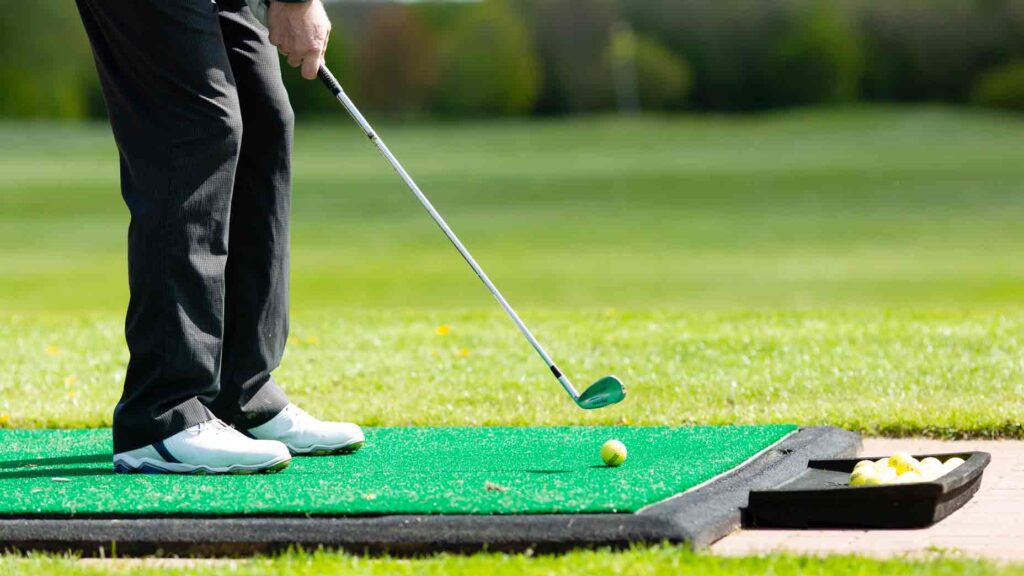
1. Use a Mirror or Record Yourself
Practicing in front of a mirror or recording your swings can provide valuable visual feedback. Observe your form and make adjustments as needed. Golf-specific analysis apps like V1 Golf or Hudl Technique can further enhance your practice sessions.
2. Focus on One Element at a Time
Rather than trying to perfect your entire swing at once, concentrate on individual components, such as your grip, posture, or weight transfer. Gradually integrate these elements into a cohesive motion.
3. Practice with Training Aids
Tools like the Golf Swing Shirt can help reinforce proper mechanics during slow-motion practice. This wearable aid encourages proper arm-body connection and swing path. Similarly, alignment sticks and weighted clubs can offer additional guidance.
4. Incorporate Visualization
Visualize your swing in slow motion before executing it. This mental rehearsal enhances focus and builds confidence in your abilities.
5. Be Patient and Consistent
Improvement takes time and effort. Dedicate at least 15-20 minutes per practice session to slow-motion swings, and you’ll begin to see results.
The Role of Tools in Slow-Motion Practice
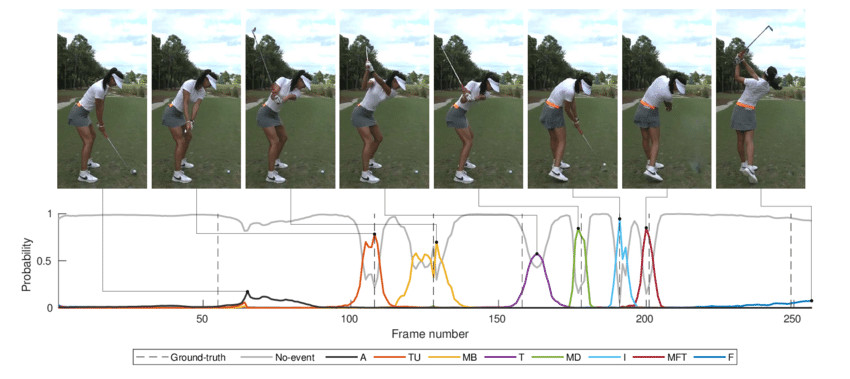
Training Aids to Consider
- Golf Swing Shirt: Helps maintain proper arm-body connection.
- Alignment Sticks: Ensure proper setup and swing path.
- Mirror Divot Board: Provides feedback on clubface alignment and swing plane.
Apps and Online Resources
Numerous apps and websites offer tutorials and feedback for golfers. For example, Golf Digest and PGA.com provide instructional videos and articles to support your practice.
Overcoming Challenges with Slow-Motion Swings
Staying Motivated
Practicing slowly can feel tedious, but remember that every deliberate movement brings you closer to your goals. Celebrate small victories, such as mastering a specific position, and remind yourself of the long-term benefits.
Avoiding Common Pitfalls
- Rushing: Resist the urge to speed up. Stay patient and focused.
- Neglecting Fundamentals: Always prioritize proper technique over results.
- Overthinking: Trust your instincts and let your body flow naturally.
Why Beginners Should Embrace Slow-Motion Practice
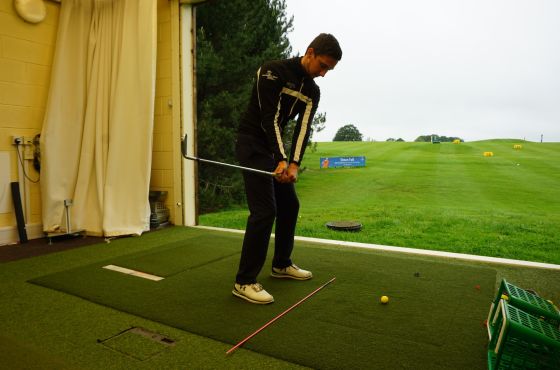
If you’re new to golf, slow-motion practice offers a gentle introduction to the game. It allows you to learn the basics without feeling overwhelmed, building confidence and setting the stage for long-term success. Additionally, it fosters mindfulness and promotes a deeper connection with your movements and goals.
Conclusion: Slow Down to Step Up
In the fast-paced world of golf, slowing down might be the key to speeding up your progress. By practicing slow-motion golf swing, you’ll master the fundamentals, develop muscle memory, and ultimately transform your game. Whether you’re a beginner looking to learn the ropes or an experienced player aiming to refine your skills, this method offers unparalleled benefits.
So grab your club, take a deep breath, and embrace the power of slow-motion practice. The perfect swing isn’t just a dream—it’s within your reach.
FAQs
Q: How often should I practice slow-motion swings?
A: Aim for at least 15-20 minutes per session, 3-5 times a week, to see noticeable improvement.
Q: Can slow-motion practice improve my swing speed?
A: Yes! By mastering proper mechanics, you’ll generate more efficient power, leading to increased swing speed.
Q: Are there specific clubs I should use for slow-motion practice?
A: Start with a mid-iron (like a 7-iron) and gradually incorporate other clubs as you progress.
Q: Can I practice slow-motion swings indoors?
A: Absolutely! Use a hitting net or practice without a ball to focus solely on your form.
Q: What’s the best way to track my progress?
A: Record your swings, track key metrics (like swing speed and accuracy), and seek feedback from a coach or experienced golfer.

